October 27th, 2014 by Dr. Val Jones in Announcements, Medical Art
No Comments »
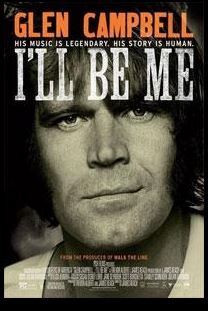 Country music legend Glen Campbell is dying of Alzheimer’s disease. In an effort to raise awareness of the illness he and his family made the brave decision to bare their lives by creating a documentary of Glen’s farewell tour. I highly recommend that you watch this film with your loved ones… and a box of Kleenex.
Country music legend Glen Campbell is dying of Alzheimer’s disease. In an effort to raise awareness of the illness he and his family made the brave decision to bare their lives by creating a documentary of Glen’s farewell tour. I highly recommend that you watch this film with your loved ones… and a box of Kleenex.
One of the most remarkable aspects of Glen’s disease was the preservation of his musical abilities despite severe cognitive impairment. Although he rarely knew where he was or even how to tie his shoes, he was able to perform songs in front of live audiences. With redirection and prompting, he managed to participate in 151 concerts across the United States within the span of ~18 months. Accompanied by his gifted guitarist son and daughter, and his doting fourth wife Kim, Campbell was able to maintain his musical self for longer than his physicians ever anticipated.
The documentary held nothing back – from violent outbursts brought on by paranoid delusions of golf club theft, to inappropriate table manners, to hypersexuality triggered by too high a dose of Aricept – the trials and tribulations of being a caregiver for someone with dementia were painfully acute. In brief moments of insight, Glen himself would manage to stammer a “Thank you. For being so nice to me. I have been an ass.”
One of the saddest moments of the movie was a brief clip of his daughter testifying before congress. She explains that memories are what lives are made of – and that although she is holding fast to the memories made with her dad, she knows that soon he will not even know who she is, and that their time together will be meaningless to him. Campbell listens silently next to her with a pained expression and misty eyes.
The movie’s final song, artfully strung together from clips of Glen singing repeat phrases into a studio mic, is haunting:
“I’m Not Going To Miss You”
I’m still here, but yet I’m gone
I don’t play guitar or sing my songs
They never defined who I am
The man that loves you ’til the end
You’re the last person I will love
You’re the last face I will recall
And best of all, I’m not gonna miss you.
Not gonna miss you.
I’m never gonna hold you like I did
Or say I love you to the kids
You’re never gonna see it in my eyes
It’s not gonna hurt me when you cry
I’m never gonna know what you go through
All the things I say or do
All the hurt and all the pain
One thing selfishly remains
I’m not gonna miss you
I’m not gonna miss you
Alzheimer’s is a terrible, cruel disease. I share the frustration of the Mayo Clinic neurologists who treated Glen Campbell – unable to do much more than simply document his decline and mentally prepare his family for the next stages of the disease. To all those who are taking care of people with Alzheimer’s I offer my sincere admiration and respect. To those who face a genetically higher-than-average chance of contracting the illness (such as myself), I tremble and hope for a cure.
October 17th, 2014 by Dr. Val Jones in Opinion, True Stories
No Comments »
 Electronic medical records (EMRs) now play a part in the daily documentation routine for most physicians. While improvements in access to patient data, legibility of notes, and ease of order entry are welcome enhancements, there is a significant downside to EMRs as well. Although I’ve blogged about my frustrations with nonsensical, auto-populated notes and error carry-forward, there is a more insidious problem with reliance on EMRs: digital dependency.
Electronic medical records (EMRs) now play a part in the daily documentation routine for most physicians. While improvements in access to patient data, legibility of notes, and ease of order entry are welcome enhancements, there is a significant downside to EMRs as well. Although I’ve blogged about my frustrations with nonsensical, auto-populated notes and error carry-forward, there is a more insidious problem with reliance on EMRs: digital dependency.
The idea of digital dependency first occurred to me during a conversation with a young medical resident at a hospital where we share patients. I was bemoaning the fact that I was being forced to use hospital-designed templates for admission notes, rather than a dictation system or carefully crafted note of my own choosing. She looked at me, wide-eyed and said:
“You’ve worked without templates? How do you even know where to begin? Can you really dictate an entire note off the top of your head? I couldn’t live without templates.”
As I stared back at her with an equal amount of bewilderment, I slowly realized that her thinking had been honed for drop-down menus and check boxes. Over time, she had lost the ability to construct narratives, create a cohesive case for her diagnostic impressions, and justify her patient plan of action. To this bright, highly trained mind, clinical reasoning was an exercise in multiple choice selection. Her brain had been optimized for the demands of an EMR template, and mine was a relic of the pre-EMR era. I was witnessing a fundamental cognitive shift in the way that medicine was practiced.
The problem with “drop-down medicine” is that the advantages of the human mind are muted in favor of data entry. Physicians in this model essentially provide little benefit over a computer algorithm. Intuition, clinical experience, sensory input (the smell of pseudomonas, the sound of pulmonary edema, the pulsatile mass of an aneurysm) are largely untapped. We lose our need for team communication because “refer to my EMR note” is the way of the future. Verbal sign-outs are a thing of the past it seems, as those caring for the same patient rely on their digital documentation to serve in place of human interaction.
My advice to the next generation of physicians is to limit your dependency on digital data. Like alcohol, a little is harmless or possibly healthy, but a lot can ruin you. Leverage the convenience of the EMR but do not let it take over your brain or your patient relationships. Pay attention to what your senses tell you during your physical exam, take a careful history, listen to family members, discuss diagnostic conundrums with your peers, and always take the time for verbal sign outs. Otherwise, what advantage do you provide to patients over a computer algorithm?
Am I a curmudgeon who is bristling against forward progress, or do I have a reasonable point? Judging from the fact that my young peers copy and paste my assessment and plans into their progress notes with impressive regularity, I’d say that templatized medicine still can’t hold a candle to thoughtful prose. Even the digitally dependent know this. 🙂
October 14th, 2014 by Dr. Val Jones in Health Policy, True Stories
3 Comments »
Physicians looking for part-time jobs to supplement their income may have run across advertisements for “lucrative” Medicare Advantage evaluation opportunities at CenseoHealth. Here’s a typical ad:
|

CenseoHealth is the leading Risk Adjustment provider for Medicare Advantage plans – with a network of more than 1,800 credentialed providers conducting over 20,000 member health evaluations a month. Due to our continued growth, we are currently looking to hire in-home physician evaluators to work in these states.
As a CenseoHealth physician, you will meet with Medicare Advantage members in their homes to conduct their annual medical history and physical evaluation.
Additional Information:
-
Conduct evaluations when it’s convenient for you
-
Ongoing physicians can make $3,500 to $4,000 per week
-
Physicians who work 1-3 days per week can make $800 – $2,000
-
Travel and lodging expenses are covered, plus we provide a per diem reimbursement
-
Malpractice insurance is included
-
This position does not require you to prescribe medicine, order lab tests, do blood work, or alter the member’s current treatment regimen
Please contact us, for more information.
Bryan Cooke
Director of Physician Recruiting
P: 972.715.3772
E: physicians@censeohealth.com
|
|
Sounds pretty good, right? Well here’s what they won’t tell you:
1. Low Hourly Pay. Compensation is $100 per completed evaluation – but you have to drive to each member’s house (sometimes an hour each way) to complete a 31 page history and physical exam. Members are often medically complex, cognitively impaired, and/or non-English speaking. In the end (after counting travel time, cancellations, scheduling snafus, and long hours completing paperwork and FedEx shipping) the hourly wage works out to be about $30.
2. Poor Logistics. Members are scheduled back-to-back without regard to distance between their locations. That means you are chronically late, and some members cancel their meeting with you. No-show and cancellation rates (in my experience) are about 20%. You are not compensated for any of the time associated with driving to their location, talking to them on the phone, or otherwise trying to locate them when they are not home upon your arrival. Once a member cancels, you cannot fill their slot with someone else on the same day.
3. Threat of harm. Members mostly come from low to middle class income levels. Some of them live in truly horrific living situations (no electricity, a home overrun with cockroaches, no food or running water), and others are psychologically unstable. As a female physician driving alone into a very rural area to conduct a physical exam on a male patient who is actively psychotic… this can be dangerous. You never know what or who you will face. I have had to call social services on numerous occasions and have narrowly escaped inappropriate sexual advances.
4. Limited Support. There is no guarantee that anyone from the parent company will be available via phone when you call during an emergency. I have called on several occasions during critical situations where I had to leave a voice message and was assured that “my call was very important” and someone from provider services “would get back to me within 1/2 a business day.”
5. Questionable ethics. Schedulers do not explain to the members why you are coming to their home to evaluate them. Because the schedulers seem to work on commission, they often use questionable tactics to get the members to agree to the evaluation – such as telling them that the meeting is “mandatory” and will “take 20 minutes” or is “just a wellness visit.” For this reason, many members receive you with suspicion, wondering if you’re there to try to “throw them off the Medicare plan” or are angry that they were mandated to meet with you. Lengthy conversations and apologies to set the stage for your evaluation are commonplace.
6. Payment denials and exaggerated pay potential. Evaluations must be completed meticulously or the quality assurrance reviewers will reject your forms and you will not be compensated for your work (if you, for example, forget to check a box or use a non-approved abbreviation). Although the advertisements state that some physicians complete 35-45 evaluations per week, that is nearly impossible in areas where clients are not clustered together tightly. It is an extremely misleading statement, in my experience. Apparently online reviewers agree.
7. Glitchy and costly technology. In order to save on costs, electronic evaluations can be completed via an iPad rather than paper forms. Unfortunately, the software often crashes, resulting in a return to paper in the middle of an evaluation. This ends up increasing the amount of time required to complete evaluations as your evenings are spent copying paper records into the iPad program. In addition, you are required to purchase your own stylus for data entry, as well as all the equipment required during your physical exam (e.g. blood pressure cuff, bathroom scale, ophthalmoscope, stethoscope, and more).
8. Low-budget travel and accommodations. While the agency boasts that they will pay for your accommodations and rental car, that typically translates into a room at a low-budget hotel and a Toyota Yaris with roll-down windows and no GPS.
9. The truth is hidden. The real reason for the evaluations is to help health insurers obtain larger reimbursements from the government. A physician (or NP) is required to verify all of the patient’s current medical conditions to justify their “risk score.” Medicare Advantage plans get paid more to manage patients with higher risk scores, so they are very motivated to document the complete list of diseases and conditions per at-risk senior. Patients may benefit from having an objective third party review their health record, but this is not the main goal. Also, it is unclear if the higher risk scores ultimately translate to more benefits and services for the patients.
10. Treated like a number. Sadly, my experience with my recruiter (the person who matches your availability with evaluation needs in various states where you hold a medical license) has been underwhelming. I took the time to make suggestions about how to improve the process for evaluators, but my recommendations fell on deaf ears. Not only were my phone calls and emails not returned, but when I suggested that it didn’t make sense for me to continue seeing members when I had a 66% no-show rate he simply replied, “I took you off the schedule – we have an abundance of FL doctors so it is not an issue.”
Take a look at the lovely marketing promotional images for the job:
And this video of what it’s like to do a home evaluation:
Now take a look at some photos that I took while on assignment (note: these are not actual patient homes, but are very similar to ones I encountered):
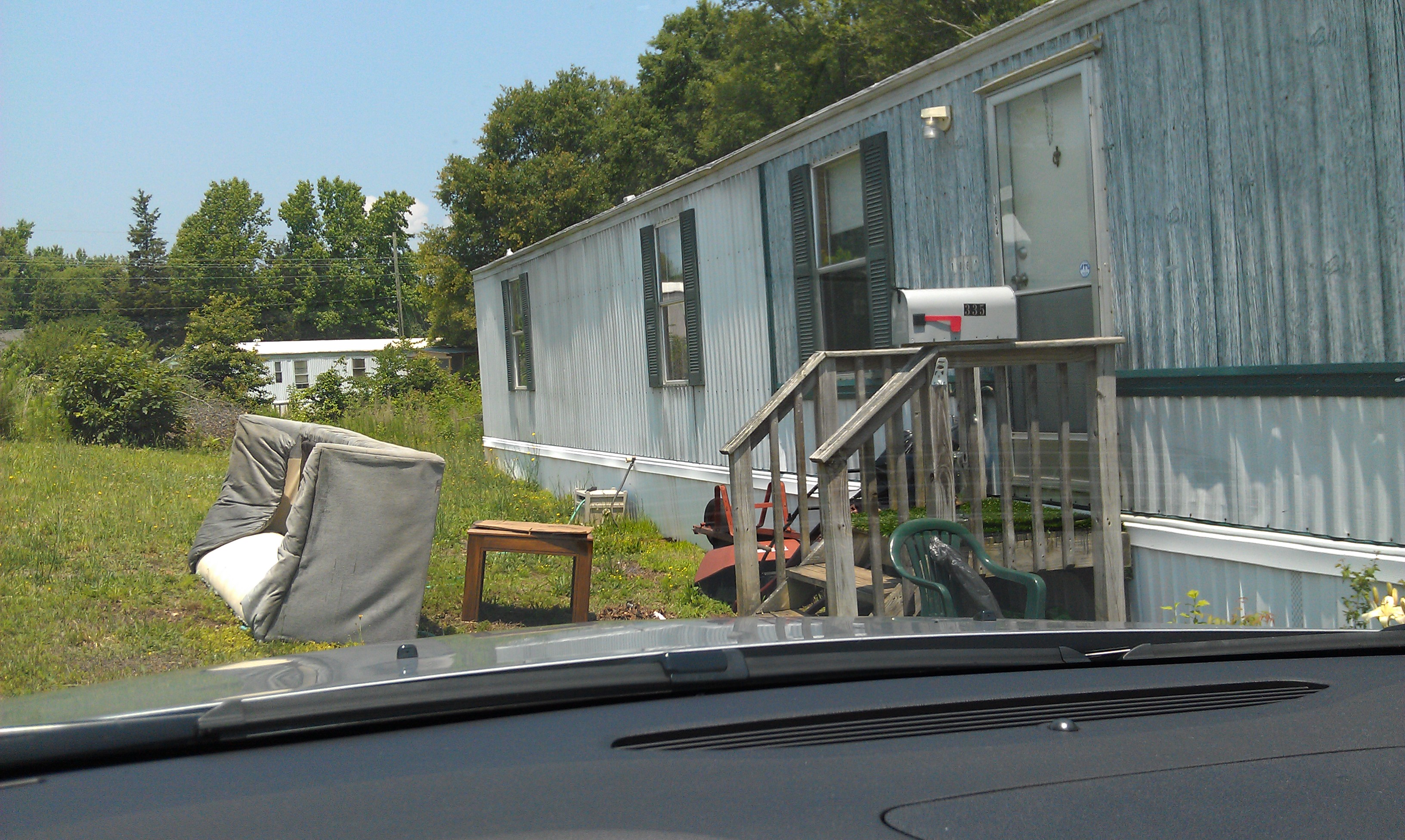


Taking a job as a Medicare Advantage evaluator was a real eye-opener. Poverty and chronic illness in America takes on a whole new light when you experience patients’ actual home environments. It’s like being a medical missionary in your own country. I’ve met patients who hadn’t seen a physician in decades, diagnosed life-threatening illnesses, and made sure that care (or case management) was initiated for countless people living on the fringes of society.
I’m glad for the experience – but think that my peers considering similar work should be told the truth about what they will be doing. Being a Medicare Advantage evaluator is not like the shiny “care anywhere” ad suggests – and “lucrative” is not exactly the right adjective for $30/hour for an MD’s time. But if you don’t mind being treated poorly by your employer, investing a lot of your own money in equipment costs, and putting your life at risk in dangerous home environments – you may actually do some good for the forgotten, frail elderly of this nation, (while helping middle men like Censeo Health to profit from health insurance behemoths, alas). Now you know the truth behind the advertising and can make an informed decision about whether or not you’d like to sign up for this work.
Any takers?
September 15th, 2014 by Dr. Val Jones in Opinion
2 Comments »
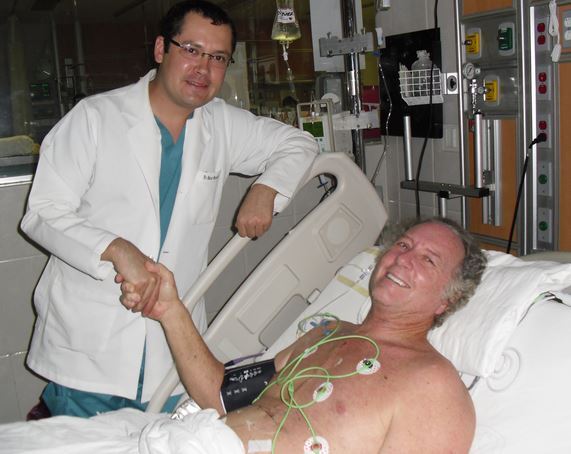 Judging from recent articles, surveys, and blog posts, the medical profession is remarkably demoralized. Typical complaints range from “feeling like a beaten dog” to “living in humiliating servitude,” to being forced to practice “treadmill medicine.” Interestingly, the public response to these complaints is largely indifferent. The prevailing attitude (if the “comments sections” of online articles and blog posts are representative) seems to be unsympathetic: “Poor doctors, making a little less income and not being treated like gods anymore? You have to do extra paperwork? You have to work long hours? Welcome to the real world, you whiners!”
Judging from recent articles, surveys, and blog posts, the medical profession is remarkably demoralized. Typical complaints range from “feeling like a beaten dog” to “living in humiliating servitude,” to being forced to practice “treadmill medicine.” Interestingly, the public response to these complaints is largely indifferent. The prevailing attitude (if the “comments sections” of online articles and blog posts are representative) seems to be unsympathetic: “Poor doctors, making a little less income and not being treated like gods anymore? You have to do extra paperwork? You have to work long hours? Welcome to the real world, you whiners!”
But thank goodness that practicing medicine is more nuanced than the Facebook stream of hostility that we are subjected to on a daily basis. If patients spoke to me the way online comments read, I’d surely have quit medicine years ago. But my reality is that patients are generally grateful, attentive, and respectful. This could be because I work in inpatient rehabilitation medicine, a place where patients are screened for motivation to participate in their care, but I don’t think that’s the whole story. I have experience working in other settings across the country (including Emergency Departments), and I have found a significant number of good-natured, engaged patients there too.
I think that to some degree our attitudes shape our work environments. Patient and peer dispositions are in part a reflection of our own. Try approaching a frightened, sick patient with an arrogant, dismissive tone and see how your professional relationship with them (and their families) develops. There is a negative cascade that physicians can trigger (perhaps unwittingly) when they are rushed, curt, or inattentive. Beginning every new patient relationship with a caring, respectful, detailed history and physical exam lays a foundation of trust for future interactions. Once you have established that positive rapport, the daily grind (along with what my friend, Dr. Steve Simmons, has nicknamed ‘C.R.A.P.P.’ – Continuous Restrictive And Punitive Paperwork) is much more bearable.
As physicians we have the power to make our careers as meaningful or soul-sucking as we choose. Reducing the C.R.A.P.P. in our work lives can help (I’ve tried outpatient, “concierge style” practices and inpatient locum tenens assignments with good success), but that’s not the most important factor in enhancing work satisfaction. The relationships built by allying ourselves with patients, and shepherding them through this broken system, are where the rewards lie. They hold the keys to our professional fulfillment because nothing can beat the joy of helping those in need.
How do I know that patient appreciation is enough to make medicine worthwhile?
Because I still don’t hate being a doctor.
September 5th, 2014 by Dr. Val Jones in Health Policy, Opinion
1 Comment »
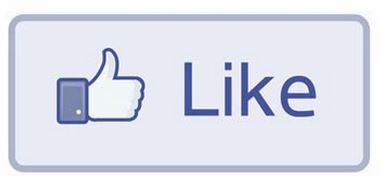 As a physician who openly despises many aspects of current EMRs (see “How An EMR Gave My Patient Syphilis” or “The Medical Chart: Ground Zero For The Deterioration Of Patient Care” ) I recognize that they are here to stay. And so, since we’re all stuck with these digital middlemen, I have some suggestions (based on popular social media platform functionality) for making them better.
As a physician who openly despises many aspects of current EMRs (see “How An EMR Gave My Patient Syphilis” or “The Medical Chart: Ground Zero For The Deterioration Of Patient Care” ) I recognize that they are here to stay. And so, since we’re all stuck with these digital middlemen, I have some suggestions (based on popular social media platform functionality) for making them better.
1. Likes. Healthcare providers should be able to “vote up” an excellent note in the medical record. Let’s face it, not all doctors are equally good at documentation. Untold hours of our time are spent trying to cull through pages of auto-populated, drop-down-box checks to figure out what’s actually going on with a patient on a particular day. Once in a while you stumble upon some comprehensive free text that a physician took the time to type after a previous encounter, and suddenly everything becomes clear. If there were a way to flag or “like” such documents, it would help other readers orient themselves more quickly to a patient’s history. A “liking” system is desperately needed in EMRs and would be a valuable time saver, as well as encouragement to physicians who document notes well. Hospitals could reward their best note makers with public recognition or small monetary bonuses.
2. #Hashtags. Tagging systems are sorely lacking in medical records systems, which makes them very difficult to search. Patients make multiple visits for various complaints, often with numerous providers involved. If physicians had the ability to review notes/records unique to the complaint that they are addressing, it would save a lot of time. Notes could be tagged with keywords selected by the author and permanently recorded in the EMR. This would substantially improve future search efforts. Even if the EMR generated 10 search terms (based on the note) and then asked the physician to choose the 3 most relevant to the current encounter, that would be a step in the right direction.
3. Selfies. Medical records would benefit from patient-identifier photographs. In a busy day where 20-30 patients are treated and EMR notes are updated after the patients have gone home, a small patient photograph that appears on each documentation page will serve the physician well in keeping details straight. Patients should be able to upload their favorite portrait to the EMR if the standard one (perhaps taken during the intake process) is not acceptable to them. In my experience, nothing brings back physical exam and history details better than a photograph of the patient.
4. Contextual links. All EMRs should provide links to the latest medical literature (on subjects specifically related to the patient’s current diseases and conditions) in a module on the progress note page. UpToDate.com and other reference guides could easily supply the right content (perhaps based on diagnosis codes). This will help physicians practice evidence-based medicine and keep current with changes in recommended treatment practices.
5. Microblogging. Sometimes there are important “notes to self” that a physician would like to make but don’t need to be part of the official medical record. EMRs should provide a free-text module (like a digital sticky note) for such purposes. These sticky notes should not be admissible in court as part of the medical record, and should not be uploaded to the cloud. Content included in these notes could include social information (patient’s daughter just had a healthy baby girl), hunches (patient looks slightly pale today – will check H&H next time if no change), and preliminary information (remember to review radiology result before calling patient next Tues).
It is my hope that EMRs will slowly adopt some best practices from top social media platforms. After all, if millions of users are effectively using voting, tagging, linking, searching and imaging in their daily online lives, it only makes sense to capitalize on these behaviors within the constraints of the medical environment. Maintaining strict confidentiality and appropriate professional boundaries (often missing in the social media world at large) is certainly possible with EMRs. Let’s build a better information capture and retrieval process for the sake of our patients, and our sanity.
***
At least one EMR is already providing #3 and #5 as part of its software: see MDHQ.com Are you aware of any others already implementing these ideas?
 Country music legend Glen Campbell is dying of Alzheimer’s disease. In an effort to raise awareness of the illness he and his family made the brave decision to bare their lives by creating a documentary of Glen’s farewell tour. I highly recommend that you watch this film with your loved ones… and a box of Kleenex.
Country music legend Glen Campbell is dying of Alzheimer’s disease. In an effort to raise awareness of the illness he and his family made the brave decision to bare their lives by creating a documentary of Glen’s farewell tour. I highly recommend that you watch this film with your loved ones… and a box of Kleenex.




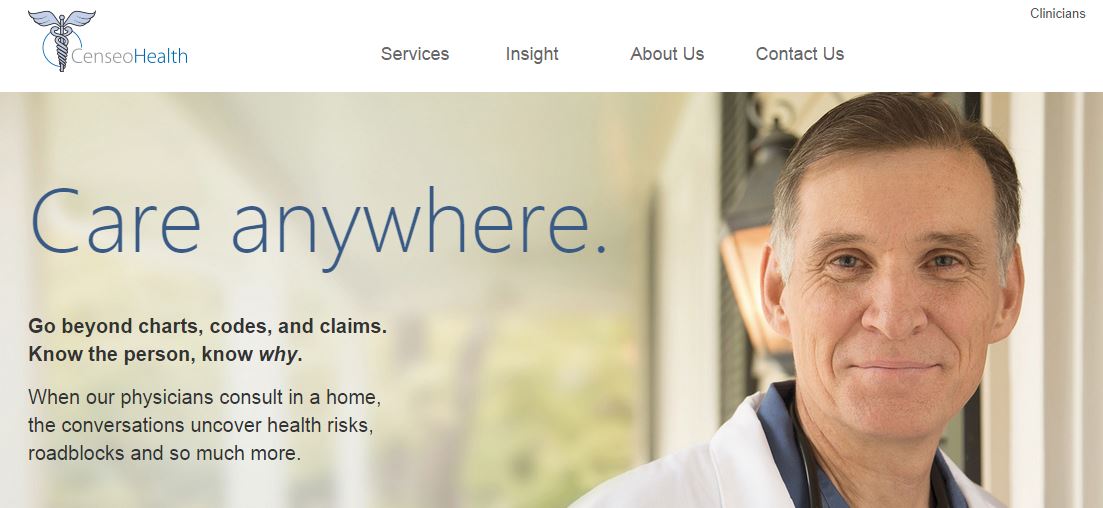




 Judging from recent
Judging from recent  As a physician who openly despises many aspects of current EMRs (see “
As a physician who openly despises many aspects of current EMRs (see “







